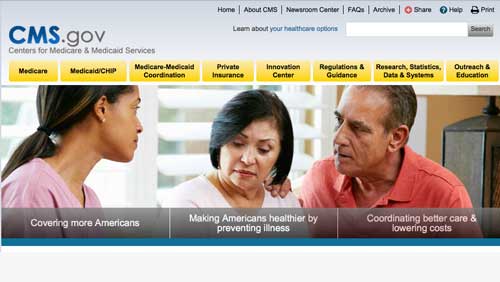
It's been called Medicare's alphabet soup: PQRS, MU, VBM, CAHPS, QRUR, SGR and MIPS. It's all part of the Centers for Medicare & Medicaid Services (CMS) Quality Strategy, which aims to improve health outcomes through quality measures, attention to population health and coordination of care. In early 2015, the Department of U.S. Health & Human Services (HHS) announced specific plans to tie Medicare reimbursements to quality, rather than quantity, of care.
HHS set a goal tying 30 percent of traditional, or fee-for-service payments, to quality through alternative payment models by the end of 2016. That goal expands to 50 percent by the end of 2018. “Whether you are a patient, a provider, a business, a health plan or a taxpayer, it is in our common interest to build a health care system that delivers better care, spends health care dollars more wisely and results in healthier people,” HHS Secretary Sylvia Mathews Burwell said.
Growing concern over quality metrics
Excessive data-collecting and reporting requirements create an enormous administrative burden. In September 2015, the Medicare Payment Advisory Commission (MedPAC), a nonpartisan policy advisor to Congress, warned that “the complexity of Medicare's resulting quality measurement systems for clinicians cannot be overstated... It is unlikely that a system with this level of complexity will be effective...and will not provide clinicians with the information that they need to improve their performance.”
Quality metrics put those serving the poorest and sickest patients at a disadvantage. For example, the Texas Medical Association is concerned that doctors will get penalized for risks outside their control. Patient noncompliance, poverty, income, education and housing are all shown to affect health quality, cost and outcome. According to the American Medical Association (AMA), a CMS contractor found that physician groups with the highest risk patients were three times more likely to have poor quality scores and four times more likely to have poor cost scores.
Quality metrics put smaller practices at a disadvantage. According to Deborah Keegan, PhD, a practice management consultant, they “do not have the IT structure to process data, they might not have the staff to coordinate care outside of office visits, and they certainly don't have the negotiating leverage with payers.” However, practices may be able to overcome their disadvantages by pooling their resources together in independent practice associations (IPAs) and collaborate on technology and data analytics to obtain quality measures.
A look at Medicare's Provider Experience Survey
Quality metrics are essential to Medicare's Shared Savings Program for Accountable Care Organizations (ACOs). Thirty-three quality measures are reported through a combination of CMS claims and administrative data (eight measures), a CMS web portal (17 measures) and a patient experience of care survey (eight measures) called the Consumer Assessment of Healthcare Providers and Systems (CAHPS). Participants are required to use a CMS-approved vendor to administer the surveys. Nationwide, business and major health insurers are utilizing patient satisfaction surveys.
Measures used in the CAHPS include: getting timely care and information, provider communication and education, shared decision making and stewardship of patient resources.
These are several pertinent CAHPS questions:
#12: In the last six months, when you phoned this provider’s office after regular office hours, how often did you get an answer to your medical question as soon as you needed?
#13: How often did you see the provider within 15 minutes of your appointment time?
#15: In the last six months, how often did this provider listen carefully to you?
#17: In the last six months, how often did this provider give you easy-to-understand information about these health questions or concerns?
#19: In the last six months, how often did this provider show respect for what you had to say?
#24: Did you and this provider talk about the reasons you might want to take a medicine?
#25: Did you and this provider talk about the reasons why you might not want to take a medicine?
#26: When you and this provider talked about starting or stopping a prescription medication, did this provider ask what you thought was best for you?
#30: When you and this provider talked about having surgery or a procedure, did this provider ask what you thought was best for you?
Unfortunately, the CAHPS survey has 72 questions, and is not particularly user-friendly. The survey is mailed to the patient, with a second survey if there is no response to the first.
Action Plan for Your Practice
Use an in-office survey that is simple and effective
Years ago, one of my employees made a box so patients could submit their comments. I put it away. Did I really want my day ruined by complaints? Since then, I've decided to take patient feedback seriously. I've realized that patient-centered quality metrics are absolutely essential for the growth of my practice. At every staff member's desk, we have postcard surveys with four questions:
- How was your experience with the eye examination?
- How was your experience with our staff?
- Did we answer all of your questions?
- How likely are you to recommend us to a friend?
We include a blank space for any comments. We encourage all of our patients to fill out a card. There are no gimmicks or online surveys. Names and e-mail addresses are not required. When there's a happy patient, we especially want them to submit their comments! If there's a disgruntled patient, we also give them the opportunity to do so. We let them know that their concerns are important and that we will make every effort to improve for next time.
I have made several changes, based on patient feedback and comments. One patient asked why I didn't carry a certain brand of safety frames, like the practice down the street. I opened up an account with this frame company that very week. I have shortened my patient history form. I have done away with my beautiful, but uncomfortable, chairs in the waiting room. I have disciplined and fired employees. Of course, there will always be those patients who will never be satisfied. A pleasant surprise has been the number of positive surveys over the negatives ones. We make an effort to post those comments on the web site.
Why patient-centered metrics are important
You measure satisfaction. Patient compliance is closely tied to patient satisfaction. We all know that outcomes are improved when patients understand and comply with our prescribed actions. According to Francois de Brantes of the Health Care Incentives Improvement Institute, “The link between patient experience of care, patient compliance, and total quality is actually very strong.”
You know how likely it is that patients will return. Patient satisfaction scores determine how likely patients are to return to our practices, year after year. Of course, there is a strong association between health outcomes and continuity of care with the same doctor.
You know how likely patients are to refer. Patient-centered metrics point to how likely patients are to refer a friend or family member. For many, referrals and word-of-mouth recommendations are far more important than Yelp and other online doctor ratings. Most patients want to find accessible doctors who listen.
Private optometric practices face many significant challenges ahead, such as the growth of online refractions/retailers and commercial optometry, as well as increasing third-party control. With greater regulatory demands, the focus can be easily shifted away from our patients. But it turns out that private medicine, where peers, patients and professional associations evaluate physician performance, does a far better job at providing quality care than the quality measures adopted by national, government-run systems.
Indeed, a private practice's major competitive strength is long-term, patient-centric care, and personal relationships built on trust and loyalty.
What are you doing to ensure that measurements of your practice's care and services are taken with your patient's needs and perspective in mind?
 Lisa Shin, OD, is the owner of Los Alamos Family Eyecare, P.C., in Los Alamos, N. M. To contact her: [email protected].
Lisa Shin, OD, is the owner of Los Alamos Family Eyecare, P.C., in Los Alamos, N. M. To contact her: [email protected].











